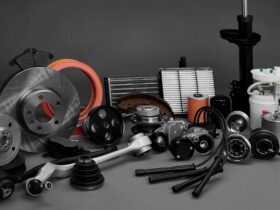The vestibular apparatus is responsible for our sense of balance, if it is well developed, then you are not at risk of seasickness or fear of attractions. The vestibular apparatus is located in the inner ear (inside the temporal bone) and is closely connected with the hearing, vision, nervous system and brain. Any person who trains his brain every day can develop his vestibular apparatus. So, what exercises will help develop the ability to maintain balance?
How to train the vestibular apparatus
There is a set of exercises that need to be performed regularly (even if bouts of dizziness and nausea stop), they are simple and easily performed at home:
Sit on a chair, lower your arms, legs straight, heels together.
Tilt your head down, exhale, then lift your head up and inhale.
Turn your head left and right several times.
Tilt your head to your left shoulder, then turn it straight. Do the same with the right shoulder.
Make a circular movement of the head from left to right, then vice versa (lowering the head – exhale, raising – inhale).
Do these exercises for 10 days, after which new exercises are introduced, already in the position of the legs wider than the shoulders, and the arms are lowered along the body:
How to train the vestibular apparatus
Inhale, while exhaling, lean towards the left leg and reach for the toe with your hands. Return to the starting position and do the same for the right leg.
Put your hands on your belt, inhale and turn to the left, while exhaling, turn the torso to the right.
Grasp the back of the chair with your hands and take the body back, breathing in. Return to the starting position-output.
All exercises should be performed 7-10 times, very smoothly and slowly. Breathing should be rhythmic, through the nose. After 20 days of daily exercises, with good health and no dizziness, the following exercises are added (the starting position of the legs is wider than the shoulders, the arms are lowered down):
Raise your hands up and inhale, bend down to the floor, touching it with your hands – exhale. Breathe through your nose, rhythmically. Do the exercise first with your eyes open, then with your eyes closed.
Put your hands on your belt. Start rotating your torso to the left, then to the right, leaning down – inhale, straightening – exhale.
Make a fist and bend at the elbow. “Throw out” the right hand forward and to the left, together with the hand, the head and torso also make a half turn to the left. Return to starting position and do the same with your left hand. Breathing can be voluntary during this exercise. First, do an eye with open eyes, then closed.
How to train the vestibular apparatus
After you master this set of exercises, connect walking to train the vestibular apparatus. Go ahead of 2 meters and, without turning back, back. First, pass with your eyes open, then with closed (you can back with open eyes), but after training both forward and back, you need to go “in the dark”. Exercise “Walking” should start with 2-3 times, gradually increasing training to 10 times.
The vestibular apparatus and active physical exercises will help: aerobics, dances, volleyball, tennis, somersaults and jumping with a body turning at 45, 90 and 180 degrees. It is very useful and swimming, especially with a rabbit, when the body turns relative to its axis.
If training is not helped, or you cannot deal with them daily, then carefully prepare for the upcoming trip: drink a sedative, for 1-1.For 5 hours, eat something light, but hearty (in no case fatty or sweet).
If the trip is sea, sit face down in the direction of traffic, do not look out the windows so as not to see flickering objects. If your trip is ahead of the car, then it is better to sit in the front seat (look at the road through the windshield from behind). After the end of the trip, be sure to get enough sleep or relax in a calm atmosphere for a while.













Leave a Reply